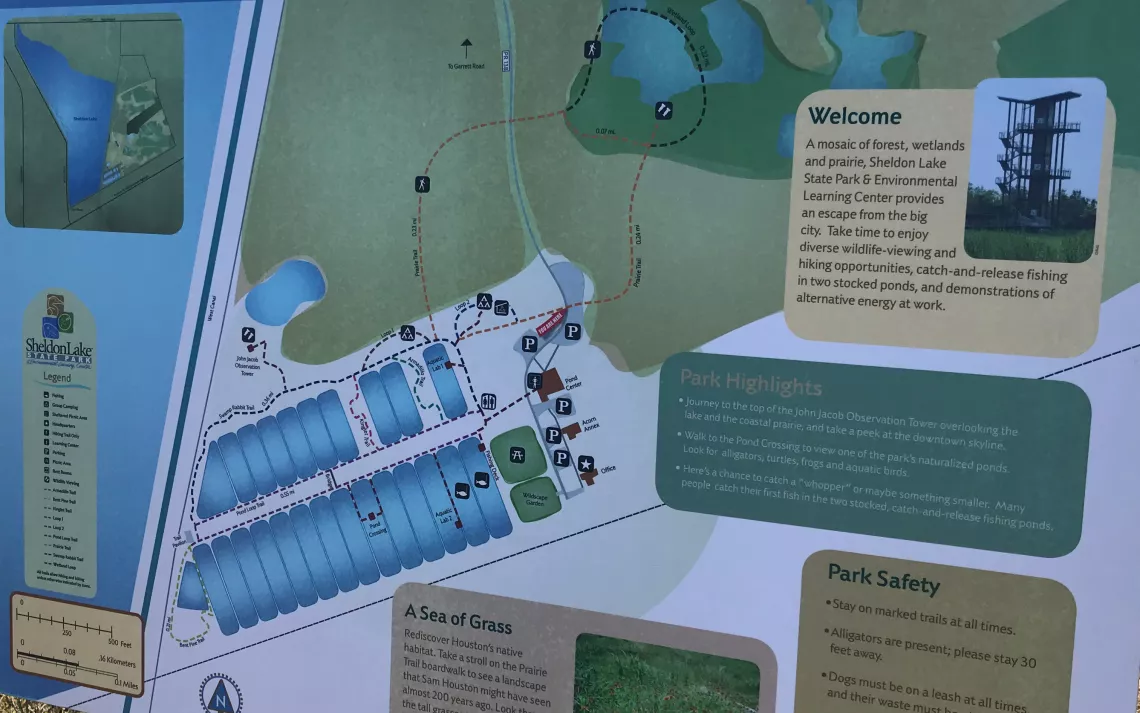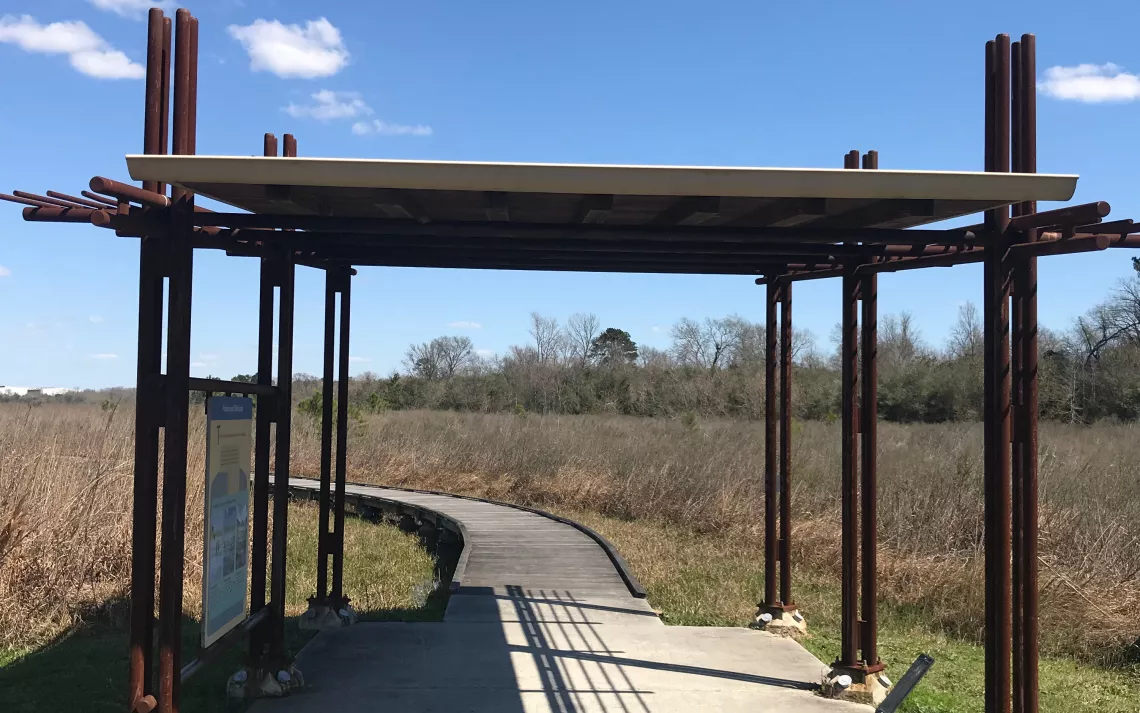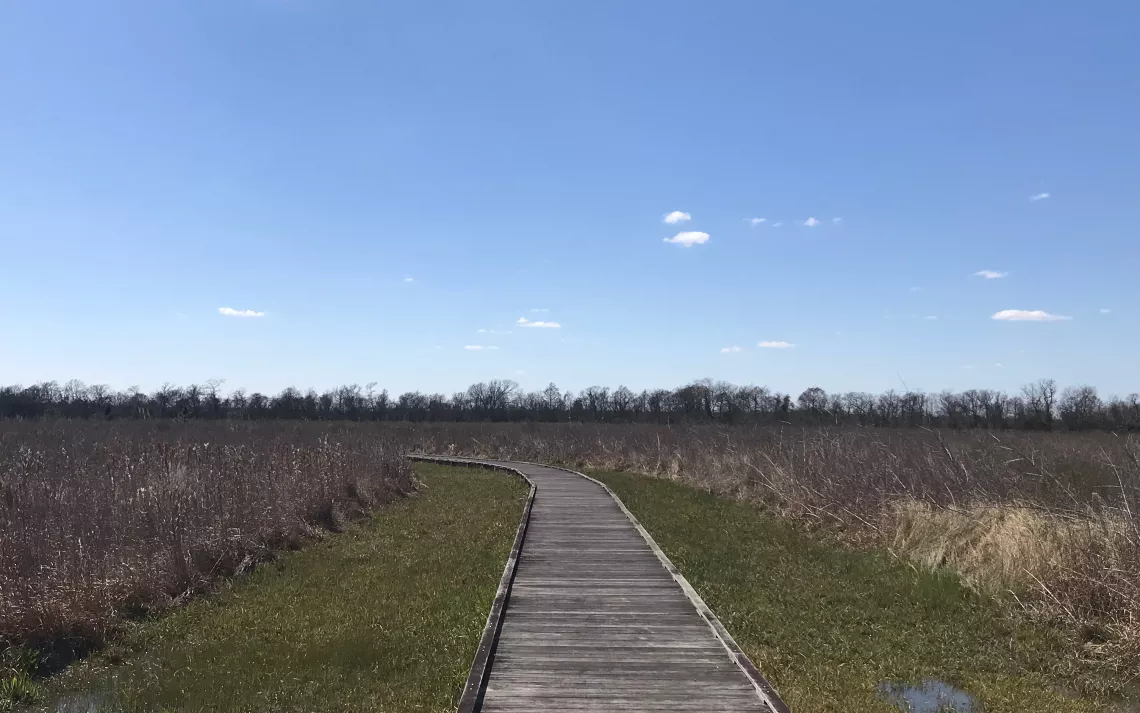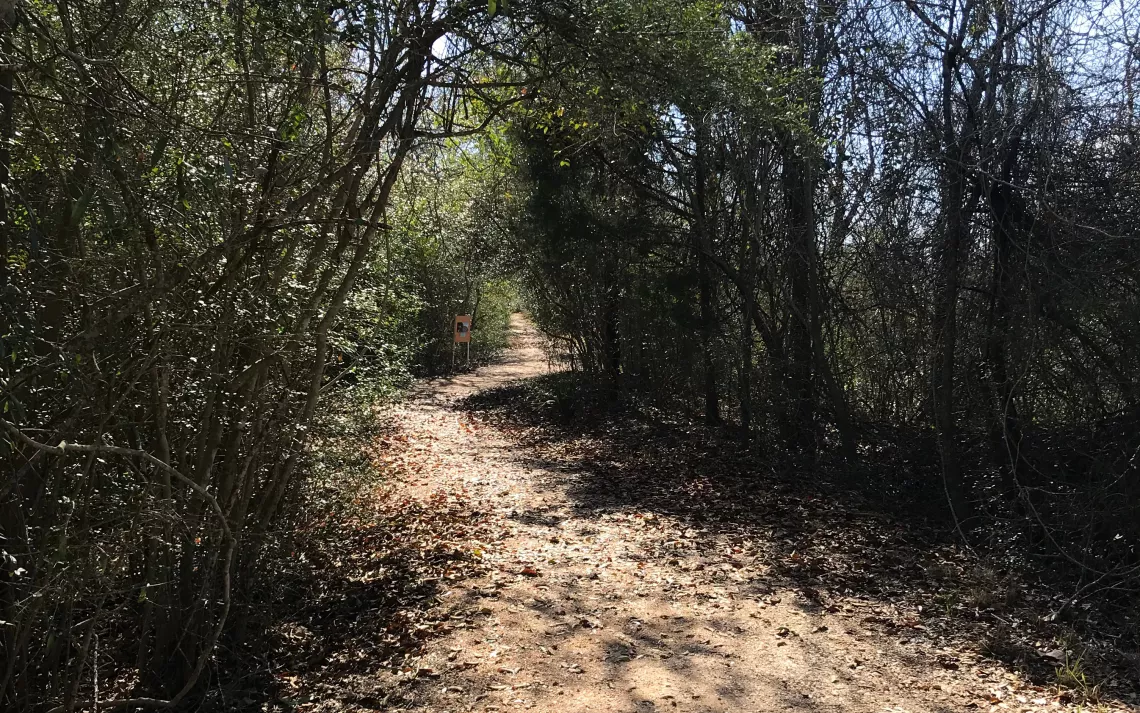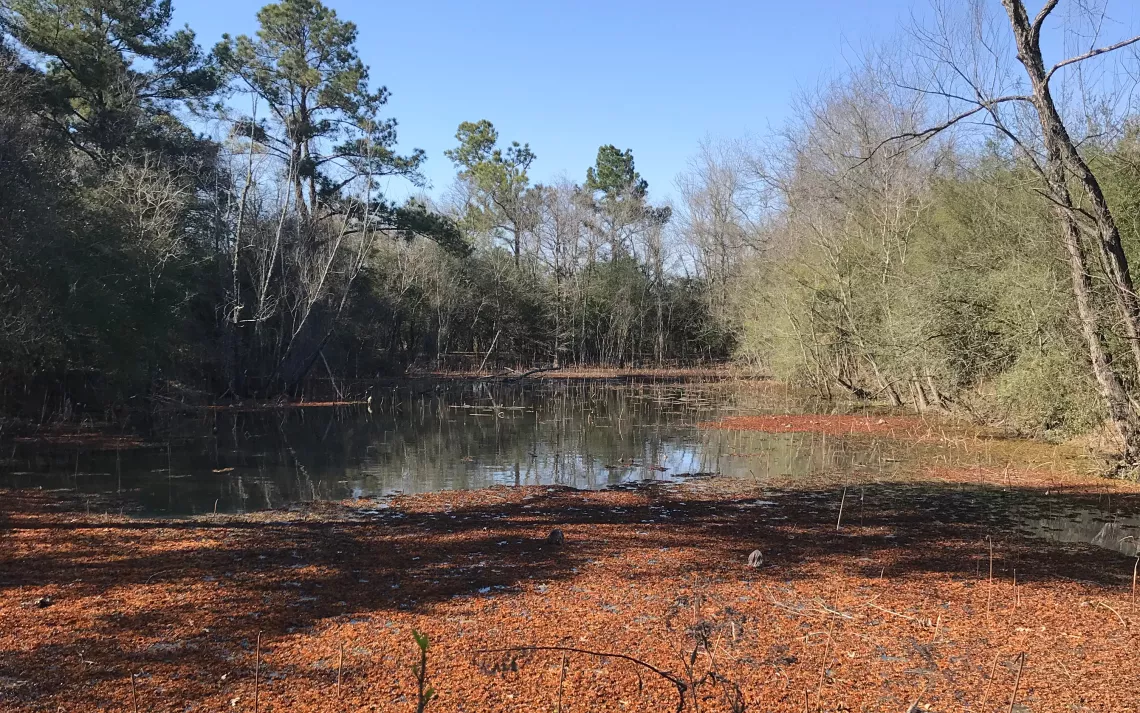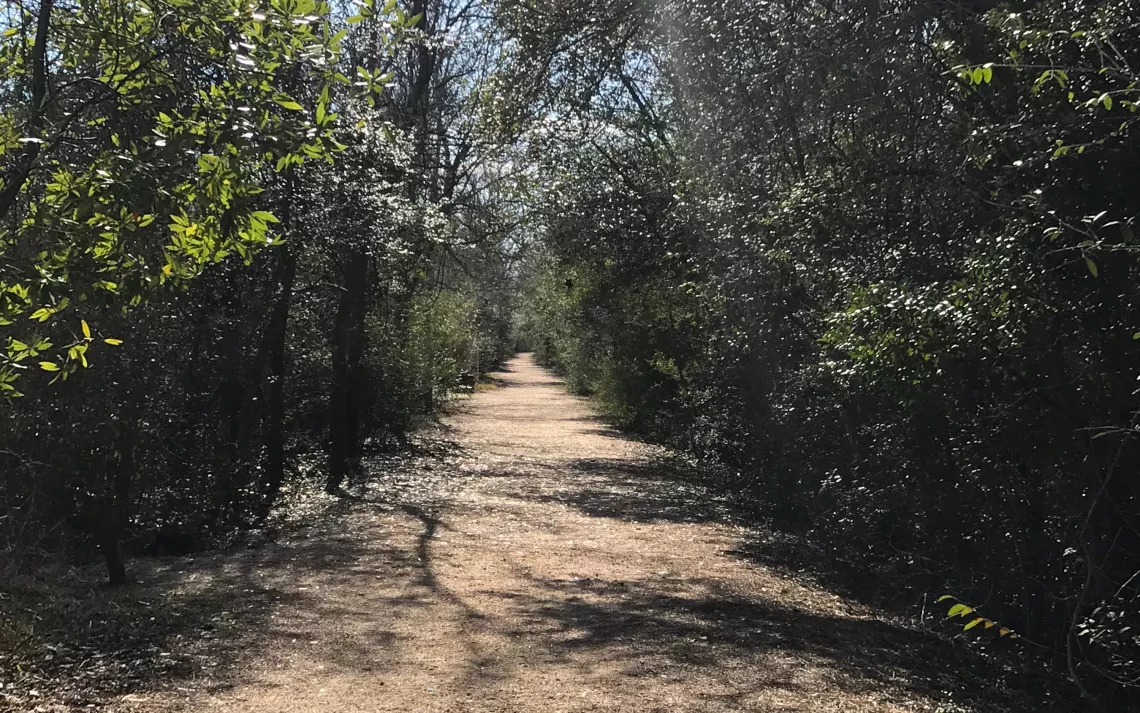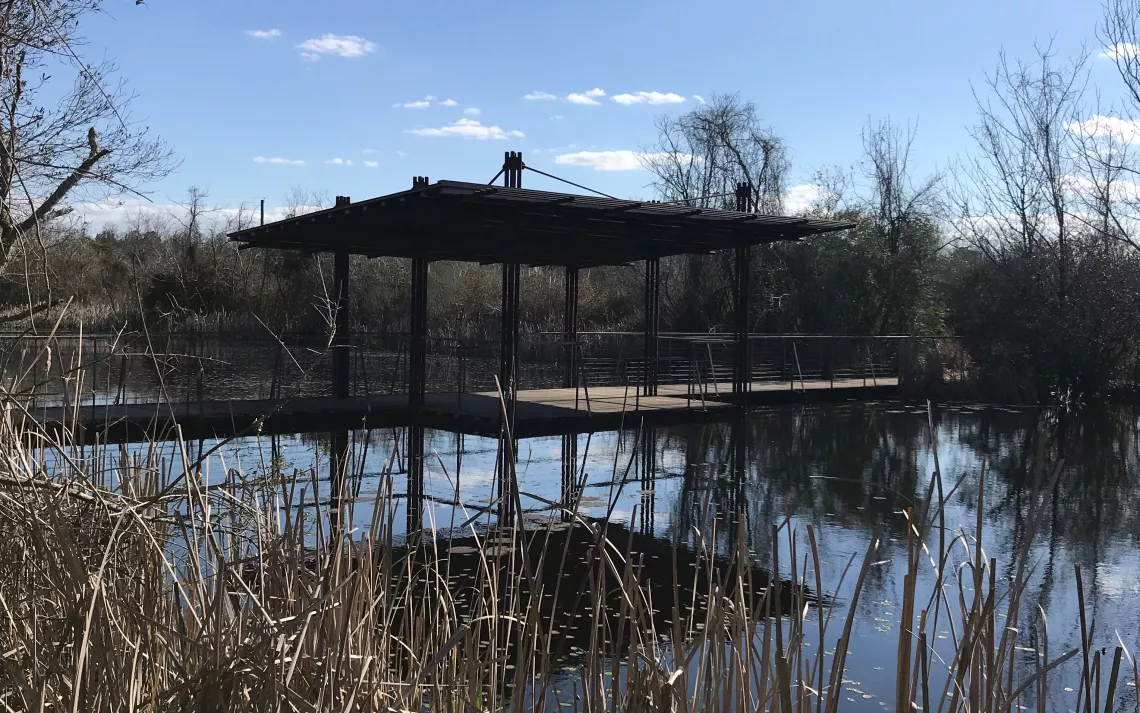Sheldon Lake State Park is a dichotomy of natural features; one side of the park is prairie and the other boasts 25 ponds each with distinct personality and characteristics. An outstanding choice for fishing and small craft boating, Sheldon Lake is a perfect day trip getaway destination.
Don’t let the trail map fool you, a walk around all of the 25 ponds is an intense work out. For those who aren’t looking to firm up calves and thighs, there are a range of trail lengths to fit any need. Wooded areas adorn all of the small lakes and there’s no shortage of wildlife present.
Afternoons will see many variety of birds and insects and even turtle and alligator. Tiny migratory birds fly in and out of the trails threading a complex flight pattern of chasing flying insects. Several Mexican Plum trees are positively vibrating in bees and California Sister butterflies while Gulf Fritillaries orbit each other in bright sunbeams along the path.
Perhaps the best view of nature can be found at the austerely named “Pond Crossing,” a pathway just above the water’s surface with deep lagoon-like views of lily pads, reeds, and a myriad of ducks and water fowl. Each pond invites a passerby to stop and observe, appreciate and respect the quiet stillness of its unique tranquility.
First Impressions
Take a turn onto Garrett Road from Beltway 8 into Sheldon Lake State Park and you might be surprised at what you see. The road into the park snakes through a few patches of wooded area and a cement retention drain that runs for miles along Sheldon Lake. Views change from darkly shaded water-logged cypresses hosting a scattering of fishermen to small patches of wooded areas into…well, nothing.
But what appears to be wide, open nothingness is actually something much more – native Texas prairie. It may be a difficult concept to accept a state park with grass fields as far as the eye can see, yet this may be one of its most important functions – ecosystem restoration.
Why do Prairies Matter?
Before a shot was fired at the Alamo or Sam Houston stepped foot in what would one day be called Harris County, the area we call Houston was mostly marshes and prairies. Many years of parking lots and suburban sprawl have seriously – and to our detriment – changed the local ecosystem.
The decline of wildlife, plant diversity, and introduction of invasive species have done massive damage. Without the original carrying capacity of plant life, the insects, birds, butterflies and wildlife have seen a drastic decline. Much of that wildlife finds its home on the prairie. Without these diverse native spaces, wildlife and pollinators have no place to breed, raise young, and perpetuate the next generation.
Perhaps the best justification of prairie conservation and restoration is one of carbon sequestration. According to the John Muir Institute of the Environment at UC Davis, grasslands are far more reliable than trees to capture carbon. Grasslands do an incredible job at maintaining good soil health and are less impacted by drought than trees.
They also fare far better at holding onto carbon when burned because they store the carbon in their roots and soil whereas burned trees release their carbon back into the atmosphere. This makes prairies far more adaptive to climate change and a more reliable carbon sink.
What Affects the Ecosystem, Affects Us
Organizations like Texas Parks and Wildlife Department, the Katy Prairie Conservatory, Houston Audubon, and the Galveston Bay Foundation are important players in the game of habitat preservation and restoration.
In fact, a piece of the Katy Prairie was actually installed at Sheldon Lake State Park to give visitors not only the opportunity to see some of the varied plant life on the other side of the nation’s 4th largest city, but to imagine that prairies belong everywhere in Southeast Texas.
Sheldon Lake State Park has committed a significant portion of its space into original prairie with all the native plants and species that originally lived here – at least when European settlers arrived. While a sea of grass may look pretty unimpressive at first glance, a closer look reveals habitat that supports native Texas wildlife such as opossum, raccoon, deer, armadillo, rabbit, and alligator. And, of course, a wide variety of birds and insects.
A Bird in the Hand Is Worth Hundreds in the Prairie
Easily one of the best features of Sheldon State Park is the massive variety of native birds supported by such a prairie. As any decent birdwatcher knows, a good pair of binoculars and an early morning arrival time is the guarantee of excellent birding. Sure, the early bird gets the worm, but the early bird watcher gets the bird – and a stunning Texas sunrise to boot.
Sheldon State Park doesn’t leave its visitors to view the sweeping prairie from its edges – elevated wooden walkways lift hikers above prairie grasses – and wildlife – to walk among the shoulder-high grasses, flowers, and wildlife.
Sheldon prairie’s beauty is subtle yet striking. Panoramas of waving grasses mimic ocean waves, creating a vista of motion while small flowers flutter and bounce in the breeze – either releasing seeds to the wind or catching the attention of local butterflies and bees. Winds whisper through ribbons of jade and blonde grasses under a dome of blue sky- the park can be stunning when you’re caught alone on the prairie. So few places exist with this kind of accessibility.
The prairie is best seen up close, but to get an appreciation of its magnitude alongside Sheldon Lake views, it’s an easy jog up four flights of stairs on the John Jacob Observation Tower. Views include the San Jacinto Monument and the Houston skyline.
With stops along the prairie trail that host educational placards filled with pictures and facts, Sheldon is the perfect place for educational outings. Teachers, take note, if that wasn’t enough to entice you into a day of bus rides and parent permission forms, Sheldon Lake State Park is also a Texas Aquatic Science Certified Field Site.
If you would like to learn more about prairies or restoring native plants to your own yard, check out the Plant 9 Natives from the Katy Prairie Conservatory. https://www.katyprairie.org/9-natives
If you are interested in volunteer opportunities to restore native plants and grasses in the Houston area please visit:
https://tpwd.samaritan.com/custom/1353/opp_search
https://www.explorationgreen.org/volunteer
https://galvbay.org/volunteer/
Author: Kristy Key
Photographs by Kristy Key
